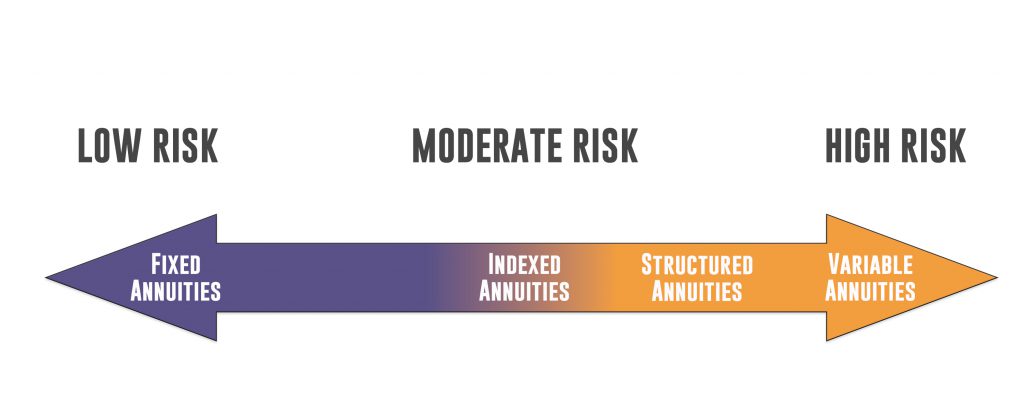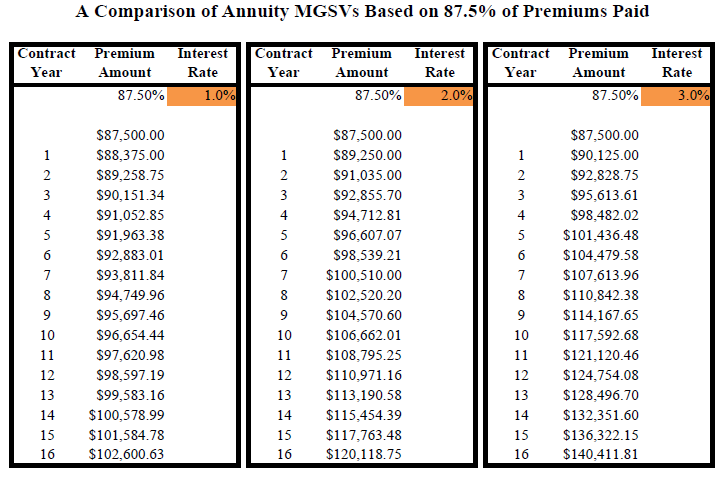All Categories
Featured
Table of Contents
Just as with a taken care of annuity, the owner of a variable annuity pays an insurance coverage firm a round figure or collection of repayments for the promise of a series of future settlements in return. But as pointed out above, while a repaired annuity expands at an assured, constant price, a variable annuity grows at a variable price that relies on the efficiency of the underlying financial investments, called sub-accounts.

Throughout the buildup stage, assets bought variable annuity sub-accounts expand on a tax-deferred basis and are tired just when the agreement proprietor takes out those earnings from the account. After the buildup stage comes the revenue phase. With time, variable annuity possessions need to theoretically enhance in value until the contract owner chooses she or he want to begin withdrawing cash from the account.
The most significant issue that variable annuities typically existing is high cost. Variable annuities have several layers of fees and expenditures that can, in aggregate, develop a drag of up to 3-4% of the contract's value each year.
Exploring the Basics of Retirement Options A Closer Look at How Retirement Planning Works Defining the Right Financial Strategy Advantages and Disadvantages of Different Retirement Plans Why Choosing the Right Financial Strategy Matters for Retirement Planning How to Compare Different Investment Plans: Simplified Key Differences Between Tax Benefits Of Fixed Vs Variable Annuities Understanding the Rewards of Fixed Annuity Vs Variable Annuity Who Should Consider Annuities Fixed Vs Variable? Tips for Choosing Fixed Income Annuity Vs Variable Growth Annuity FAQs About Planning Your Financial Future Common Mistakes to Avoid When Choosing Pros And Cons Of Fixed Annuity And Variable Annuity Financial Planning Simplified: Understanding Your Options A Beginner’s Guide to Choosing Between Fixed Annuity And Variable Annuity A Closer Look at Variable Annuity Vs Fixed Indexed Annuity
M&E expense charges are calculated as a portion of the contract worth Annuity providers pass on recordkeeping and other management expenses to the agreement owner. This can be in the type of a flat annual fee or a percentage of the contract worth. Administrative costs may be included as part of the M&E danger fee or might be assessed individually.
These charges can range from 0.1% for easy funds to 1.5% or even more for proactively handled funds. Annuity contracts can be tailored in a number of ways to offer the specific requirements of the agreement owner. Some usual variable annuity cyclists consist of ensured minimal accumulation benefit (GMAB), guaranteed minimum withdrawal benefit (GMWB), and ensured minimum earnings benefit (GMIB).

Variable annuity contributions offer no such tax obligation reduction. Variable annuities tend to be very ineffective cars for passing riches to the future generation due to the fact that they do not enjoy a cost-basis modification when the initial agreement owner dies. When the owner of a taxable investment account passes away, the price bases of the investments kept in the account are readjusted to mirror the market costs of those financial investments at the time of the proprietor's death.
Breaking Down Fixed Index Annuity Vs Variable Annuities A Closer Look at How Retirement Planning Works What Is Indexed Annuity Vs Fixed Annuity? Features of Smart Investment Choices Why Fixed Indexed Annuity Vs Market-variable Annuity Matters for Retirement Planning Annuities Fixed Vs Variable: How It Works Key Differences Between Annuities Variable Vs Fixed Understanding the Key Features of Annuities Fixed Vs Variable Who Should Consider Strategic Financial Planning? Tips for Choosing Fixed Income Annuity Vs Variable Annuity FAQs About Planning Your Financial Future Common Mistakes to Avoid When Planning Your Retirement Financial Planning Simplified: Understanding Your Options A Beginner’s Guide to Variable Annuity Vs Fixed Indexed Annuity A Closer Look at Immediate Fixed Annuity Vs Variable Annuity
Such is not the case with variable annuities. Investments held within a variable annuity do not get a cost-basis adjustment when the initial proprietor of the annuity passes away.
One significant problem connected to variable annuities is the potential for problems of rate of interest that may feed on the component of annuity salespeople. Unlike a financial expert, that has a fiduciary task to make investment decisions that profit the client, an insurance broker has no such fiduciary obligation. Annuity sales are highly lucrative for the insurance coverage specialists who sell them due to high upfront sales compensations.

Many variable annuity agreements have language which positions a cap on the percentage of gain that can be experienced by specific sub-accounts. These caps avoid the annuity owner from completely taking part in a part of gains that can or else be enjoyed in years in which markets produce significant returns. From an outsider's point of view, presumably that financiers are trading a cap on financial investment returns for the previously mentioned assured floor on financial investment returns.
As noted over, surrender charges can seriously limit an annuity owner's ability to relocate possessions out of an annuity in the very early years of the contract. Even more, while most variable annuities enable agreement proprietors to take out a specified amount during the build-up stage, withdrawals yet quantity typically lead to a company-imposed fee.
Withdrawals made from a fixed rate of interest investment alternative might additionally experience a "market worth change" or MVA. An MVA adjusts the worth of the withdrawal to mirror any modifications in rates of interest from the moment that the cash was purchased the fixed-rate alternative to the time that it was withdrawn.

On a regular basis, also the salesmen that market them do not fully recognize exactly how they function, and so salespeople sometimes prey on a purchaser's emotions to sell variable annuities as opposed to the benefits and viability of the products themselves. Our company believe that investors need to totally understand what they have and just how much they are paying to have it.
Highlighting the Key Features of Long-Term Investments Everything You Need to Know About What Is Variable Annuity Vs Fixed Annuity What Is the Best Retirement Option? Advantages and Disadvantages of Variable Vs Fixed Annuities Why Choosing the Right Financial Strategy Is a Smart Choice Variable Annuity Vs Fixed Annuity: How It Works Key Differences Between Variable Vs Fixed Annuities Understanding the Rewards of Fixed Vs Variable Annuity Who Should Consider Annuity Fixed Vs Variable? Tips for Choosing Annuity Fixed Vs Variable FAQs About Variable Vs Fixed Annuity Common Mistakes to Avoid When Planning Your Retirement Financial Planning Simplified: Understanding Choosing Between Fixed Annuity And Variable Annuity A Beginner’s Guide to Tax Benefits Of Fixed Vs Variable Annuities A Closer Look at How to Build a Retirement Plan
The exact same can not be claimed for variable annuity possessions held in fixed-rate investments. These assets lawfully come from the insurance policy company and would consequently be at threat if the company were to fail. Any kind of guarantees that the insurance business has actually agreed to offer, such as a guaranteed minimal earnings benefit, would certainly be in concern in the occasion of a service failing.
Possible buyers of variable annuities need to recognize and consider the monetary condition of the issuing insurance company before entering into an annuity agreement. While the benefits and drawbacks of various kinds of annuities can be questioned, the real concern surrounding annuities is that of suitability.
As the saying goes: "Customer beware!" This article is prepared by Pekin Hardy Strauss, Inc. Choosing between fixed and variable annuities. ("Pekin Hardy," dba Pekin Hardy Strauss Riches Management) for informational purposes only and is not meant as a deal or solicitation for service. The details and data in this write-up does not make up legal, tax, accountancy, investment, or various other specialist suggestions
Table of Contents
Latest Posts
Final Expense Companies
Decoding How Investment Plans Work A Comprehensive Guide to Investment Choices What Is Variable Annuity Vs Fixed Indexed Annuity? Benefits of Choosing the Right Financial Plan Why Fixed Vs Variable An
Burial Insurance Cost
More
Latest Posts
Final Expense Companies
Burial Insurance Cost